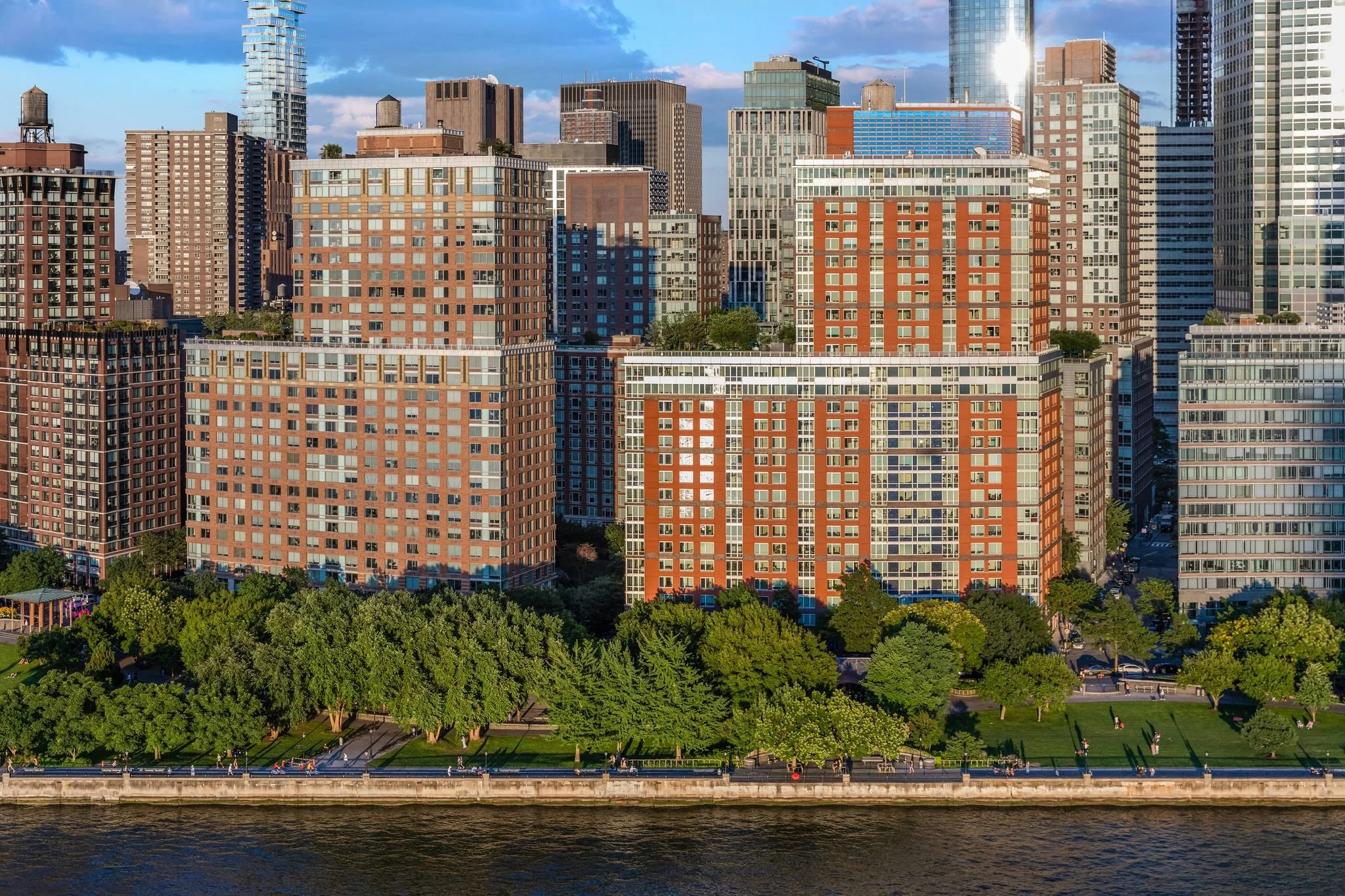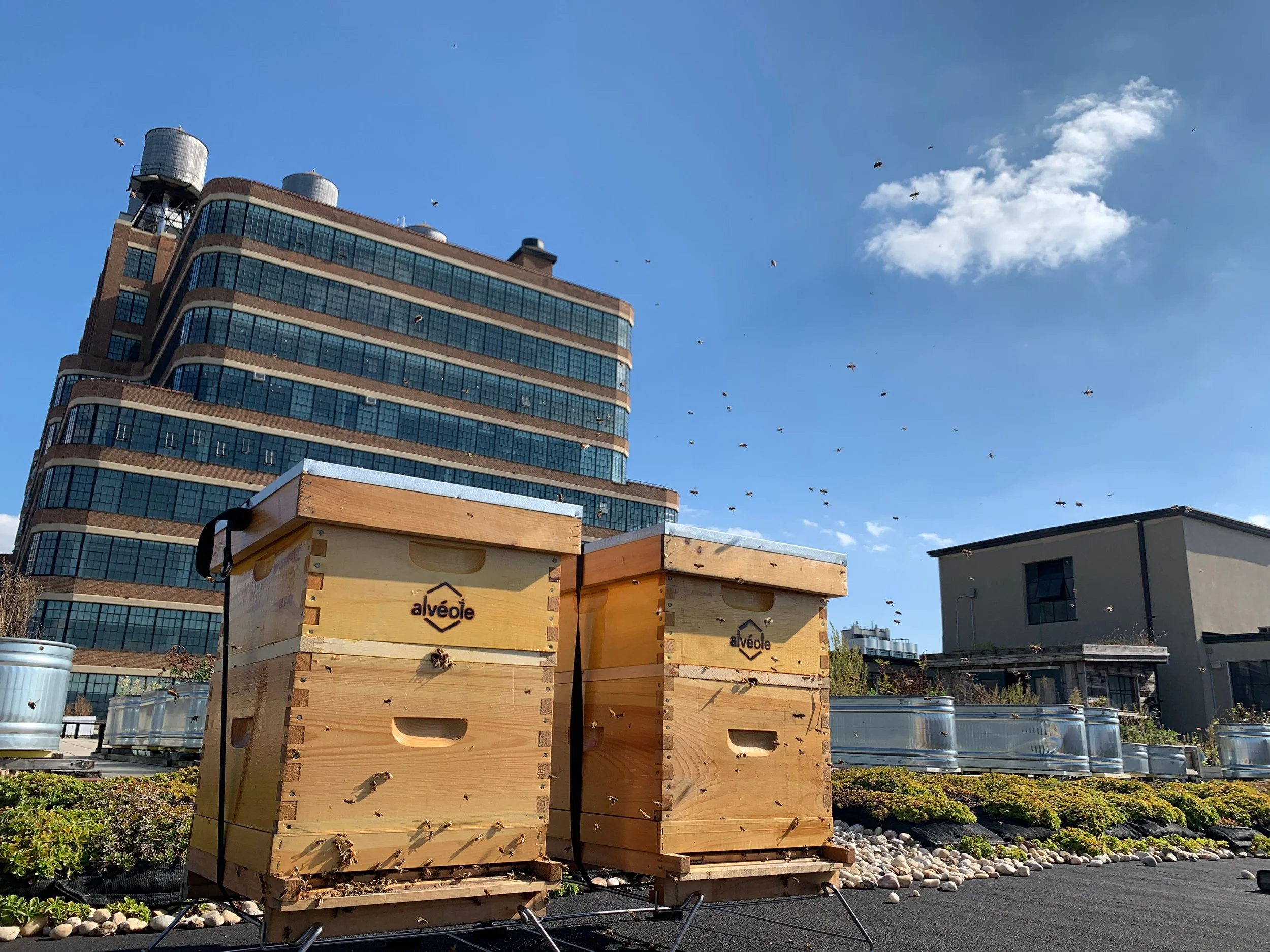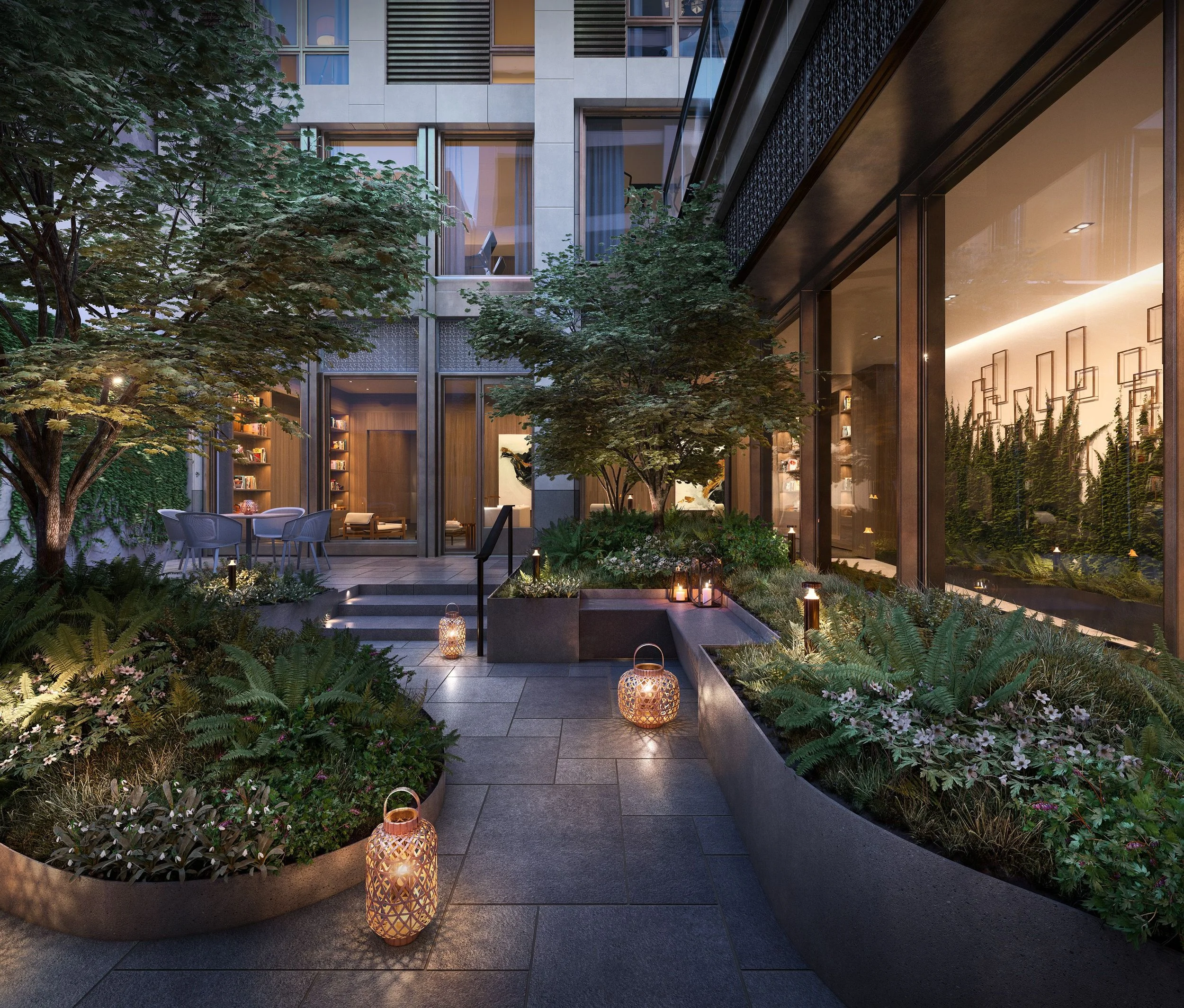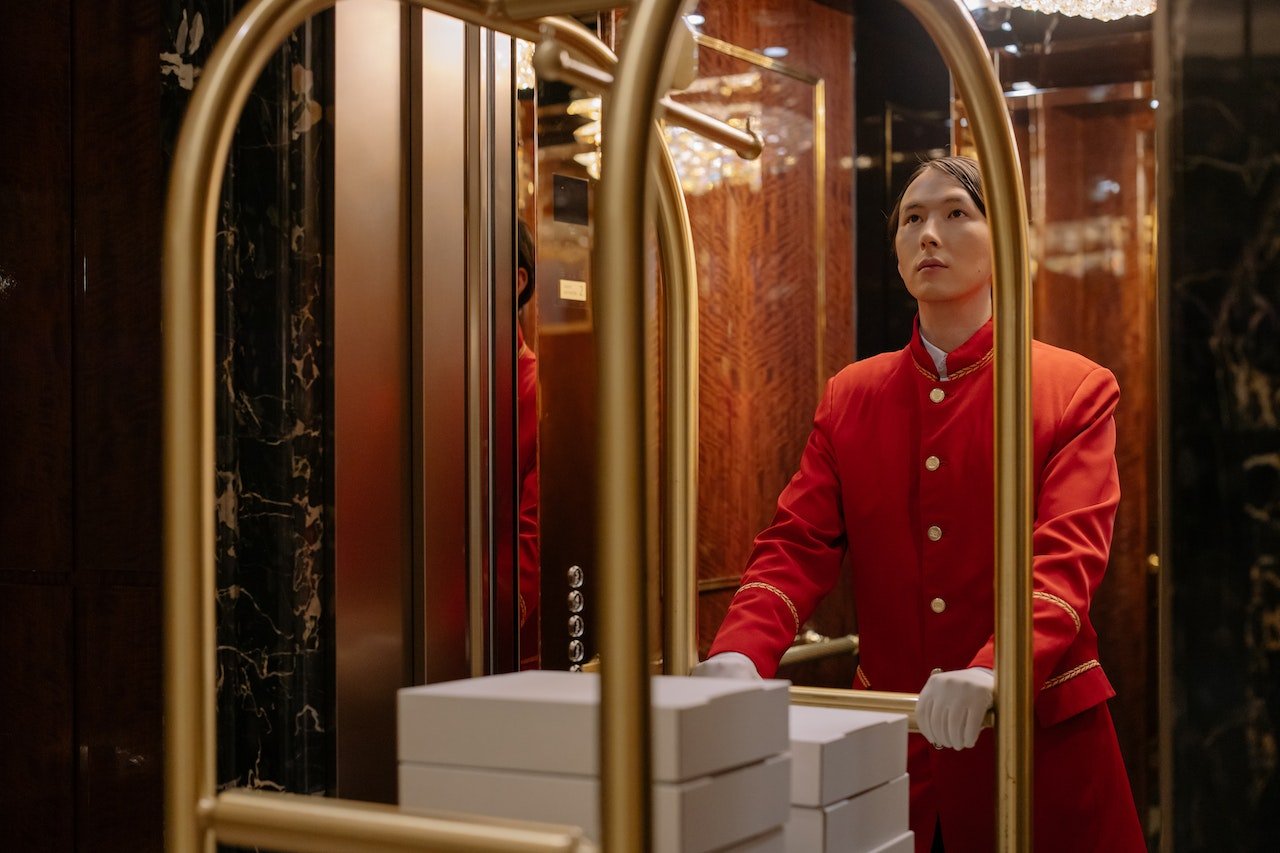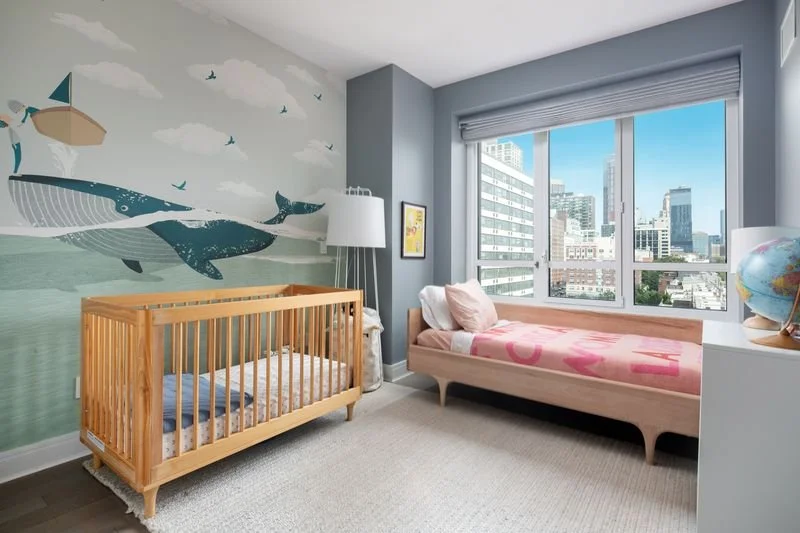From Rooftops to Honey Pots: The Buzz about Beekeeping in Manhattan
Discover how the concrete jungle of Manhattan is transformed into a buzzing haven for urban beekeeping. As the pandemic has sparked new hobbies, beekeeping has become a surprising trend among New Yorkers, and some residential buildings are taking advantage of their rooftops to create their own apiaries. Not only does this bring nature to the city, but it also produces honey for residents and tenants. In this article, we showcase four environmentally-friendly buildings that prioritize biophilia by incorporating greenery and outdoor spaces. Learn how these buildings promote the human need to connect with nature, and how living among the bees can help reduce stress levels in the bustling city.
The Solaire, Battery Park City
Credit Evan Joseph
The Solaire, Manhattan’s premier green building featuring LEED-certified residences in the heart of Battery Park City, has had beehives on the roof for over five years, looked after by Best Bees. In 2022, Best Bees was able to harvest 56.2 pounds of honey from the 20,000 bees populating two beehives on the roof of The Solaire. The green building gives out jars of the bee’s honey to all prospective buyers and residents of the building!
And bees or no bees, the building has been a major success. With over 100 residences in contract and closed, sales and marketing firm Corcoran Sunshine announced that The Solaire was the top-selling new development property in Manhattan in 2022.
“The Solaire is committed to fostering sustainable practices in the building, and the introduction of a rooftop apiary five years ago has been a fun and creative way to interact with our Battery Park City ecosystem,” says Corcoran Sunshine’s Aaron Goed, Director of Sales at The Solaire. "Best Bees manages and harvests honey from the handcrafted rooftop apiary so we can give jars of our own honey to prospective buyers at the building, who appreciate the personal touch and the unique connection to our surrounding green spaces in the neighborhood.”
The Starrett-Lehigh Building, West Chelsea
The famous Starrett-Lehigh Building in West Chelsea, owned by RXR, has a whole urban farm on its roof, including beehives run by an army of volunteer tenants who can keep track of their building’s hive through a special portal by urban beekeeping company Alvéole, who has has 116 million bees in their “bee portfolio.” The garden on top of Starrett-Lehigh has perennial flowers and bushes like Joe Pye weed, echinacea and Budlia for the bees. RXR is a huge proponent of supporting biodiversity in urban areas- approximately 450,000 bees live in nine hives across seven of their buildings in 2023. The program has been so popular that RXR is adding beehives to their properties at Pier57, 230 Park, 32 Old Slip, and 75 Rockefeller.
RXR uses their beehives to educate and engage with the community and their building tenants, many of whom are looking for fun reasons to return to the office. For example, on National Tea Day, RXR gifted tenants jars of honey from their hives, coupled with a tea tasting with their partners at Brooklyn Tea.
11 Hoyt, Downtown Brooklyn
11 Hoyt, designed by the renowned Jeanne Gang, features a nearly 27,000-square-feet elevated private park. What makes this unique is that the park includes multiple flower gardens, all strategically featuring native flowers that draw in monarch butterflies during their yearly migration through NYC. If that wasn't cool enough, the park also includes a butterfly-themed playground where young residents can enjoy running and climbing a giant caterpillar and butterfly jungle-gym. Hollander Design is responsible for the thoughtful landscape design and envisioned it to be an experiential park with thoughtfully designed outdoor spaces ideal for a wide array of activities including exercise and play, as well as zones for relaxation and contemplation. Residents can enjoy an alfresco barbecue, meditative yoga on the fitness deck, an invigorating dip in the outdoor hot tub or even take their furry friends to the private dog park.
Flatiron House, Flatiron
Credit River Film
Flatiron House comprises two distinct buildings connected by a shared interior garden with a total of 44 residences. With architecture and interiors by COOKFOX Architects, a leader in biophilic design, the development utilizes a number of guiding principles that promote health, wellbeing, and indoor-outdoor living.
Residence 21A is one of the homes outfitted with a self-watering irrigation system under each window to allow plants to bloom and grow through the 222-square-foot balcony’s latticework. The loggia (covered terrace) in 21A is accessible via the living room, primary corner bedroom, and secondary bedrooms. Designed in collaboration with Brooklyn-based landscape architect Future Green Studio, plant species will be included in the home, such as periwinkle, thyme, oregano, lavender, alpine strawberries, and lowbush blueberries. The planting choices are very specific and based on a Mediterranean approach to be edible, fragrant and open to regular sun exposure.
Have a listing you think should be featured contact us or submit here to tell us more! Follow Off The MRKT on Twitter and Instagram, and like us on Facebook.
